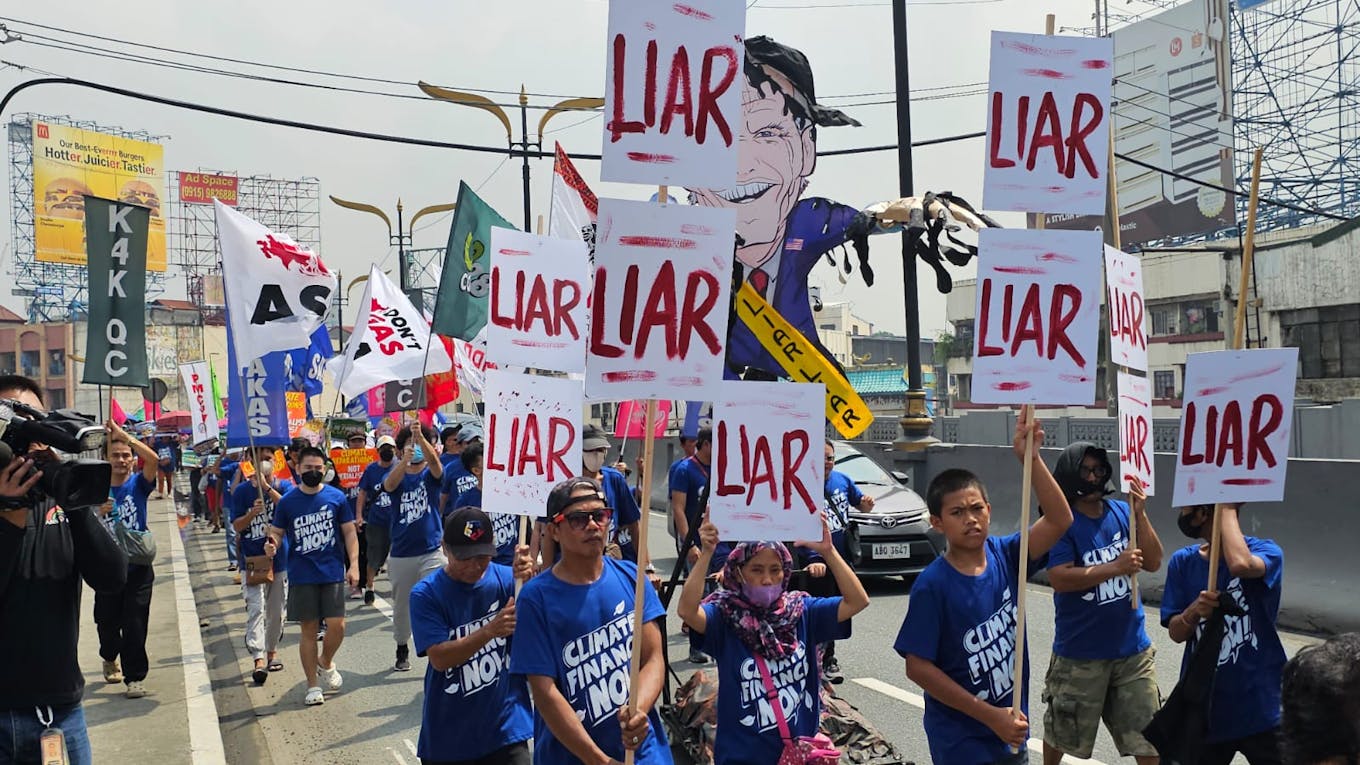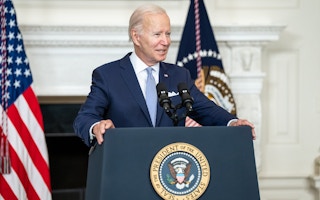United States President Joe Biden was notably absent at the recent United Nations Secretary-General’s Climate Ambition Summit on 20 September held in New York.
To continue reading, subscribe to Eco‑Business.
There's something for everyone. We offer a range of subscription plans.
- Access our stories and receive our Insights Weekly newsletter with the free EB Member plan.
- Unlock unlimited access to our content and archive with EB Circle.
- Publish your content with EB Premium.
With two months left until the global climate talks called COP28, the summit was an important space for world leaders to bring their ambitious and concrete plans to fight climate change.
President Biden instead opted to send his climate envoy John Kerry, who did not speak because only leaders from nations with concrete plans to achieve net-zero greenhouse gas emissions were given three minutes to address the gathering.
The world’s biggest emitter remains lacking in bold, new climate commitments and action. It is also behind in the delivery of its climate finance obligations. After this week, we shall once again see the US fail to rise to the moment.
The Second Pledging Conference of the Green Climate Fund (GCF) is happening on 5 October in Bonn, Germany. Governments of the Global North are expected to announce their increased climate finance contributions in this conference.

Climate campaigners hold a protest action near the US embassy in Manila to demand the delivery of climate finance obligations to the people of the Global South. Image: APMDD
The US government, represented by President Biden, is the biggest bully and blocker of climate action. Despite the worsening climate crisis, the US is yet to deliver on its climate finance obligations while expanding fossil fuel production and continuing with domestic fossil fuel subsidies.
In the years 2020 and 2021, it provided at least US$165.89 billion worth of conditional and unconditional subsidies for fossil fuels.
The US is the largest emitter of greenhouse gases. A report on the world’s key emitters found that it has cumulatively produced more carbon dioxide than any other nation, contributing more to human-caused climate change than any other nation over the course of history.
Countries in the Global South that have the least contribution to the crisis suffer the worst impacts. Communities in Asia are suffering massive losses and damages.
These countries have been demanding the US government to urgently deliver adequate, non-debt-creating, unconditional, and predictable climate finance through the financial mechanisms under the UN Framework Convention on Climate Change (UNFCCC). Instead, the US promotes false and highly politicised finance solutions in international climate spaces.
“
For a long time the US had blocked the establishment of the loss and damage fund, and had opposed any inclusion about liability and compensation for loss and damage in climate agreements.
Climate finance is an obligation and part of reparations for historical and continuing harms and injustices. Under the UNFCCC, countries in the Global North, including the US, are responsible for providing climate finance to the Global South. A report estimates that the US owes at least US$80 trillion in climate debt to developing countries based on their climate fair share.
The transitional committee on loss and damage finance, created last November 2022 by the Conference of Parties (COP) to the UN Framework Convention on Climate Change, is now working on recommendations on the operationalisation of the loss and damage fund (LDF) for consideration and adoption by the upcoming COP28.
The COP27 climate summit finally made a decision to establish the fund, a long standing demand of vulnerable developing countries and climate justice movements. It is aimed at providing finance to cover loss and damage in developing countries.
For a long time the US had blocked the establishment of the LDF, and had opposed any inclusion about liability and compensation for loss and damage in climate agreements.
Last July, during a hearing before a House of Representatives foreign affairs committee on whether the US would pay countries that have been damaged by floods, storms and other climate-driven disasters, Kerry said the US says it will not “under any circumstances” pay reparations to developing countries.
Recently, the US proposed to the transitional committee to have the LDF as a financial intermediary fund (FIF) under the auspices of the World Bank, rather than as an independent and democratically-accessible fund under the guidance of the COP.
This means that the World Bank will be in charge of raising, directing, and disbursing all funding for the LDF. The US is also pushing to resource the LDF through loans from multilateral development banks (MDBs), proceeds from carbon trading, and other financial arrangements.
Approximately US$2.8 trillion will be needed annually by the Global South in 2030 to mitigate its GHG emissions and roughly US$300 billion annually for resilience building and adaptation.
Estimates for economic losses and damages from worsening climate impacts are also projected to range US$400 to US$900 billion annually by 2030. These figures are poised to surge if climate finance remains insufficient, delayed, and unresponsive to the pressing climate needs of the Global South.
Given the urgency of the climate crisis, the fund must be operationalised as soon as possible. Rich countries largely responsible for warming our planet should immediately mobilise substantial new and non-debt creating climate finance to pay for climate-related damage in vulnerable countries, as well as for reparations for the huge climate debt owed by governments of the Global North to the Global South.
In addition to the US’ intransigence are its broken promises: the US government has only provided US$1 billion out of its already highly inadequate US$3 billion pledge to the Green Climate Fund (GCF), a commitment announced during the Obama administration.
During the 2021 Climate Leaders’ Summit convened by the Biden Administration, the US promised to mobilise US$11 billion Climate Finance for developing countries by 2024. However, in the fiscal year 2024 budget proposal submitted to the US Congress, only US$6 billion “development assistance” was requested for the USAID and no new and additional funds through the GCF and other finance mechanisms under the UNFCCC.
The US’ bullying and deception have long plagued climate negotiations. To build momentum on climate action, we have to fight the bully. Delayed climate action means more loss and damage and, consequently, sky-high loss and damage finance.
Lidy Nacpil is coordinator of the Asian Peoples’ Movement on Debt and Development (APMDD).













